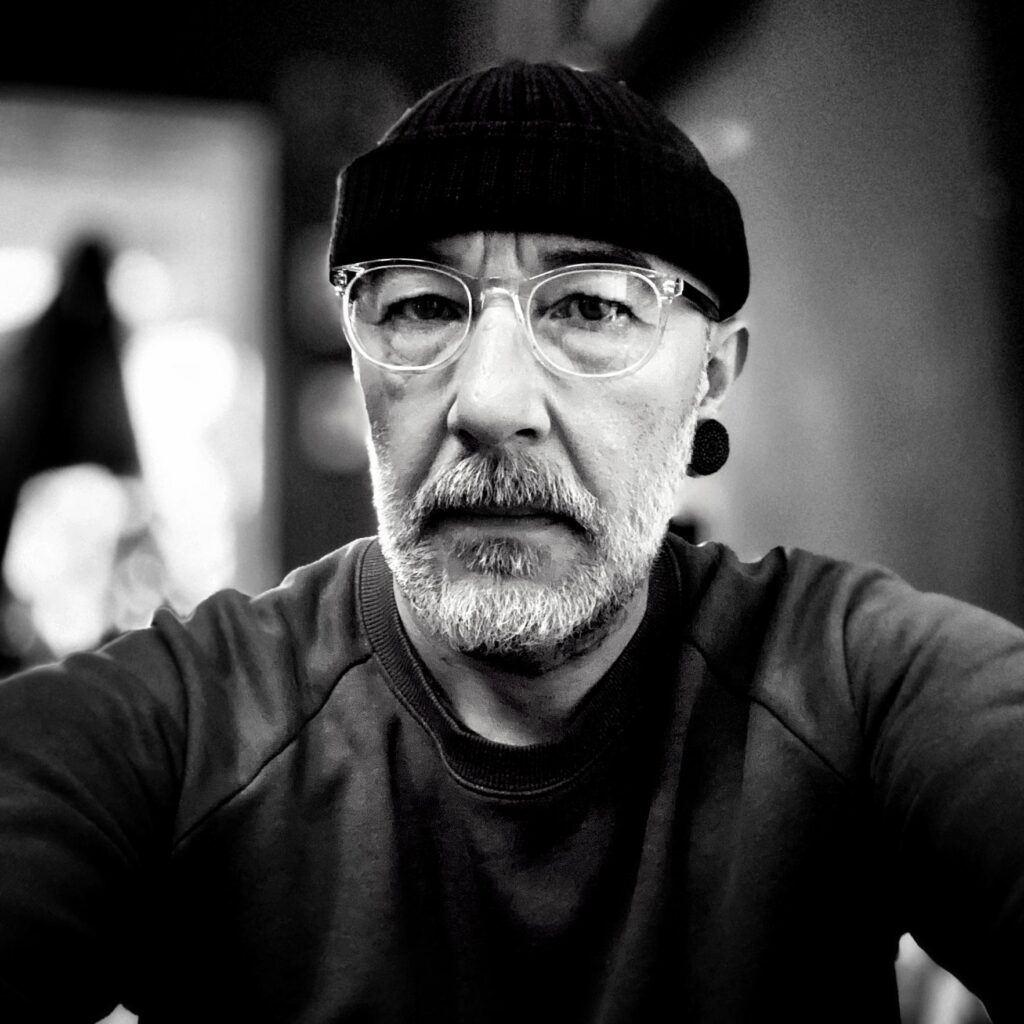
Born in Sunderland and raised in Easington during the 1980s, Paul vividly remembers walking past the picket lines every day on his way to school. The same picket line was captured in the iconic photographs by Keith Pattison who documented the Miners’ Strike. Seeing Keith’s photographs years later inspired Paul to become a documentary photographer.
Throughout Paul’s youth he would “borrow my parents point and shoot camera as a way of recording life and important events”, he says his passion for photography was ignited during a year long trip to India in his late twenties.
“The first photograph that came out as I intended was of a Holy Cow silhouetted against the sunset.”
On his return, he enrolled on an HND in Photography at Sunderland College in 2003 and started getting jobs throughout his time at college and then (Sunderland) university. He graduated in 2007.
An interest in people and a passion for telling stories are the qualities which Paul says make him a good photographer.
Always opting to capture “things as they are” Paul says: “I love the challenge of capturing people and events as they unfold, whether that is live music, a protest or a boxing match.”
- Read more: Night Classes a lesson in accessible theatre
- Read more: Baltic Open Submission – every exhibit tells a tale
In terms of what he finds most challenging, he says: “All photography has its challenges; I spend a long time gaining the trust of people I’m hoping to photograph.
“Often the biggest challenge is getting a project funded. The way I work takes a lot of time, I don’t just parachute in, take a few snaps and leave. It takes time to build trust and tell the stories with authenticity and honesty.”
On his wish list for a future project is to photograph the impact of the war on drugs in Mexico.
“Mexico is a beautiful country that I once called home,” he says. “I met my wife there and was welcomed into the community. Things have changed dramatically with the influx of global drug money and guns from America.
“I would love to be able to follow the stories on all sides of the crisis.”
Find subjects that inspire or enrage you; being passionate about your work will keep you motivated to achieve your goals
Paul Alexander Knox
Aside from his aforementioned early influences, Paul rattles off a list when asked about those whose work he admires.
“Eugene Richards, Darcy Padilla, Penny Smith, Mik Critchlow, Syd Shelton, Nadav Kander, and Corrine Day are a few of my favourite photographers. If I had to pick one it would be Eugene Richards – his work has a rawness and an honesty.”
He was also happy to share some tips to aspiring photographers.
“Experiment, and always remember that you are in control of your camera. Find subjects that inspire or enrage you; being passionate about your work will keep you motivated to achieve your goals. Educate yourself; know what has gone before.”

This is my wife Dawn meeting our son, Gabriel for the first time. She passed out seconds after this was taken. That was a traumatic week in our lives but it ended well. Her waters broke on Sunday and he was born by emergency C-section on Thursday.
Dawn and I had decided to document the birth; when things didn’t go smoothly, we kept photographing. I love this image.
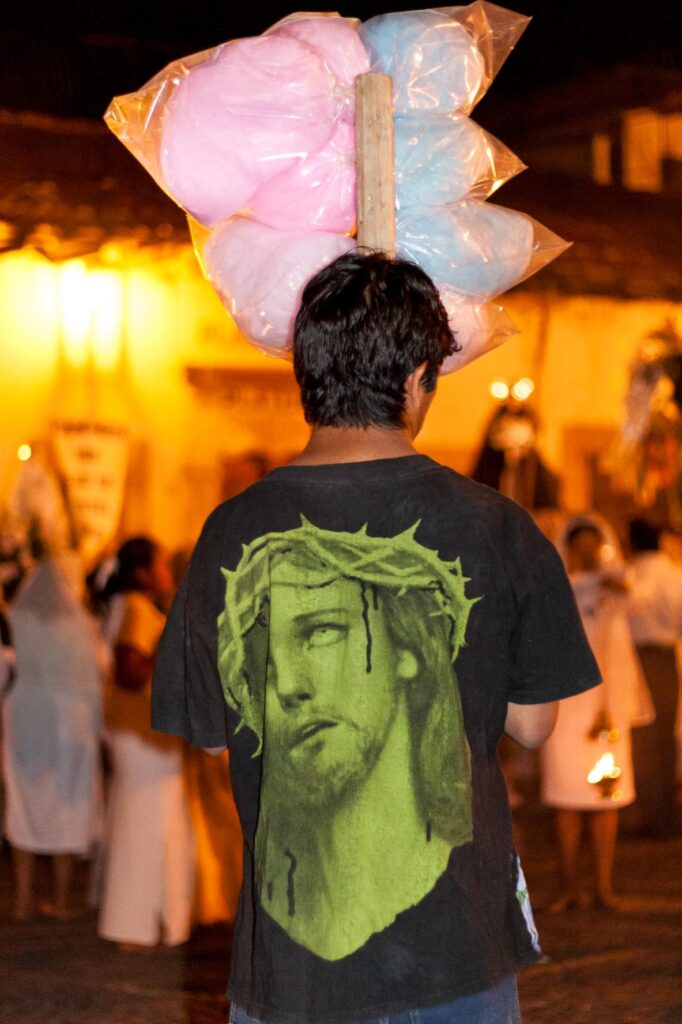
This is the Semana Santa, Holy Week, in Mexico. I lived in the small town of Taxco, Mexico from 1999-2000 catching glimpses of the processions. I went back in 2004/5 and photographed all aspects of the Easter celebrations.
I wanted to show a different form of ‘religious extremism’. I photographed the Penitentes, men carrying the bails of thorns and flagellating themselves. They processed through the night praying for healing of a family member or forgiveness for past sins. Women walked over the cobbled streets with bare feet in chains in hopes of redemption.
All the while there’s a fairground where you can hook a duck and throw balls at coconuts. The juxtaposition of the two things really fascinated me. I’d witnessed it when I lived there but I wasn’t a photographer then, so I wasn’t looking at it with the same eyes. The subsequent work became my first book, Candy Floss and Crucifixes.
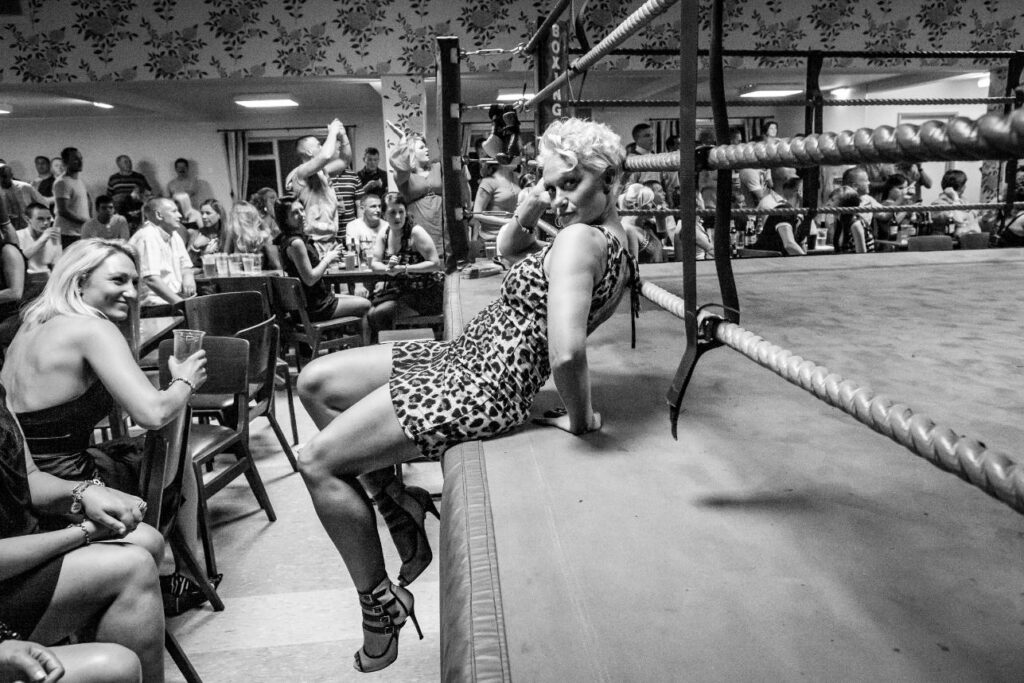
This was taken around 2011 at the engineers club in Darlington. If you turned left, you could play Bingo in the lounge. If you went right, you were in the bar and they just put a ring up.
I had shot professional boxing before – spending around 18 months documenting (Darlington boxer) Francis Jones, both in and outside of the ring. My very first assignment was a Commonwealth title fight for a magazine. I took about 300 photos of which about six were usable for the publication; I knew then it wasn’t just the fights I wanted to photograph, I wanted to document all of it.
Francis’ professional career had come to an end when he suffered a brain bleed, but several years later, he came back to fight unlicensed – I think it was to raise money for a children’s hospital.
This was the first time I’d shot unlicensed fighting and it was a real eye opener. Francis was going up against a fighter from Teesside way who had been hailed as Britain’s Hardest Doorman.
It was a strange atmosphere in the room, it felt like no-one wanted to be photographed. I nearly put my camera down, it felt so sketchy. But something in me said ‘if you don’t do this, you might as well pack it all in’. So I made it my own, shot his fight and a couple of others as well as the crowd.
‘This woman was a belter. I just love that photo. It got used by (Sunderland band) Frankie and the Heartstrings in 2013 for the first single off their second album.’
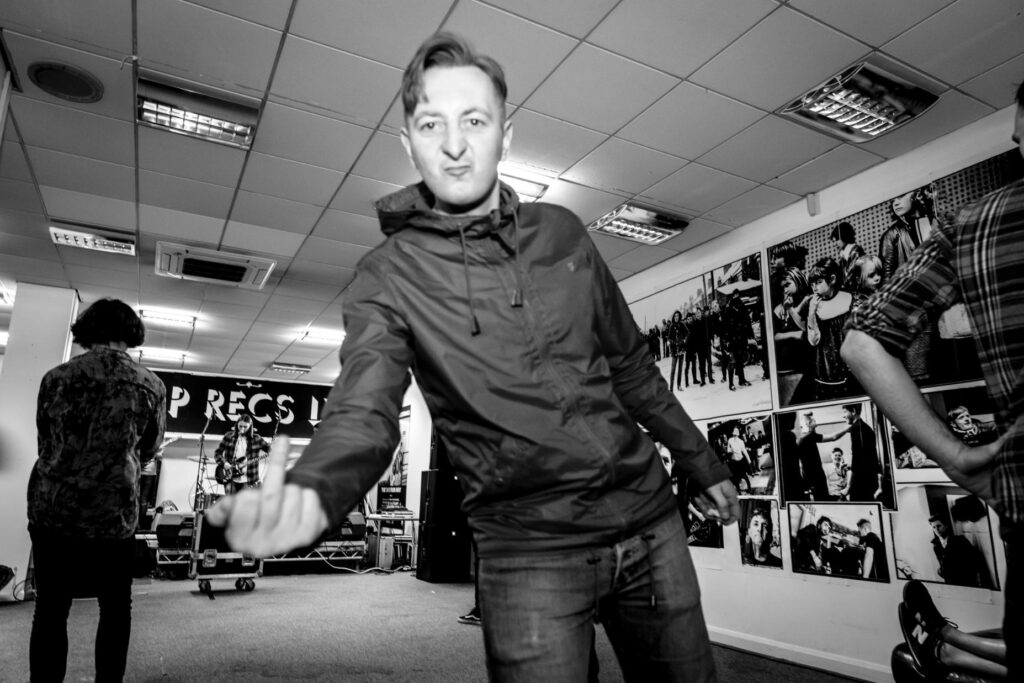
The classic and much-missed Dave Harper giving me the finger. I was shooting a sound check (for Dave’s band, Frankie and the Heartstrings) and he just jumped in front of the camera.
The photo has since been used for all (Sunderland live music and community venue and cafe) Pop Recs’ Still Hate Thatcher t-shirts and other merch.
I met Dave through a mutual friend Richard Walker-Hardwick’s book launch and we hit it off straight away. I did a couple of gigs with the Heartstrings. The friendship was born and we became really close.
The band initially talked about using some of my photos for the first album, but ended up going with Keith Pattison’s photos from the Miners’ Strike – which you can see on the walls behind Dave here. They used my photos for the second album.
Pop Recs was only supposed to stay open for a couple of weeks to launch the album. I shot some stuff in the empty shop and then did the majority of the gigs as it developed in the first venue with the likes of The Vaccines, Lanterns on the Lake, Badly Drawn Boy and James Bay.
That photo means a lot. It’s not sharp, but he was literally photobombing me when I was taking a picture of something else. That’s typical of Dave. He’d stick a spoke in your wheels to raise a wry smile.
It was important to include this both for Dave and for what Pop Recs stands for – a good thing for a good reason, as he would say.
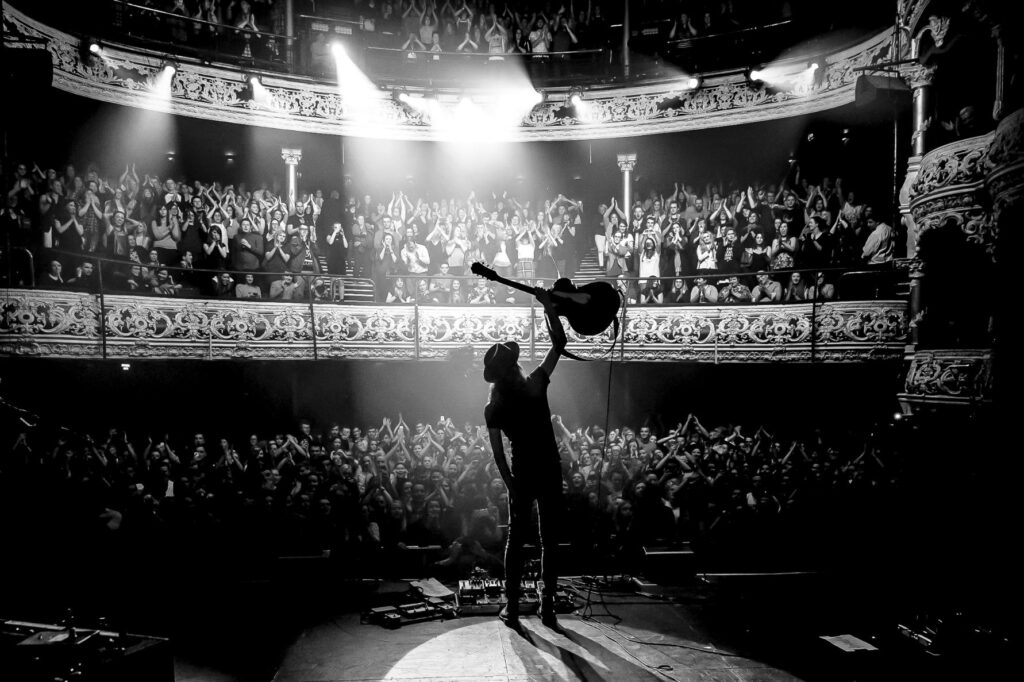
This was taken in Dublin on James’ UK and Ireland tour.
I’d shot James at Pop Recs and after the gig, I sent him some of the photos for him to use on his social media if he wanted to.
About three or four months later, I got a call from his management, wanting to fly me to Dublin to shoot the last couple of dates from his UK and Ireland tour. When I got there I realised there were only one or two voices on the crew who weren’t Geordies.
It was a really welcoming environment. I was really nervous, but Guinness had sent a couple of kegs over to the dressing rooms, so that helped.
I worked on and off with James for four years across the UK, European and American tours as well as festival runs.
This was the night I met Marty who was one of the techs on James’ crew and is now in Hector Gannet, who I shot during their support slot for Sam Fender at St James’ Park last summer.
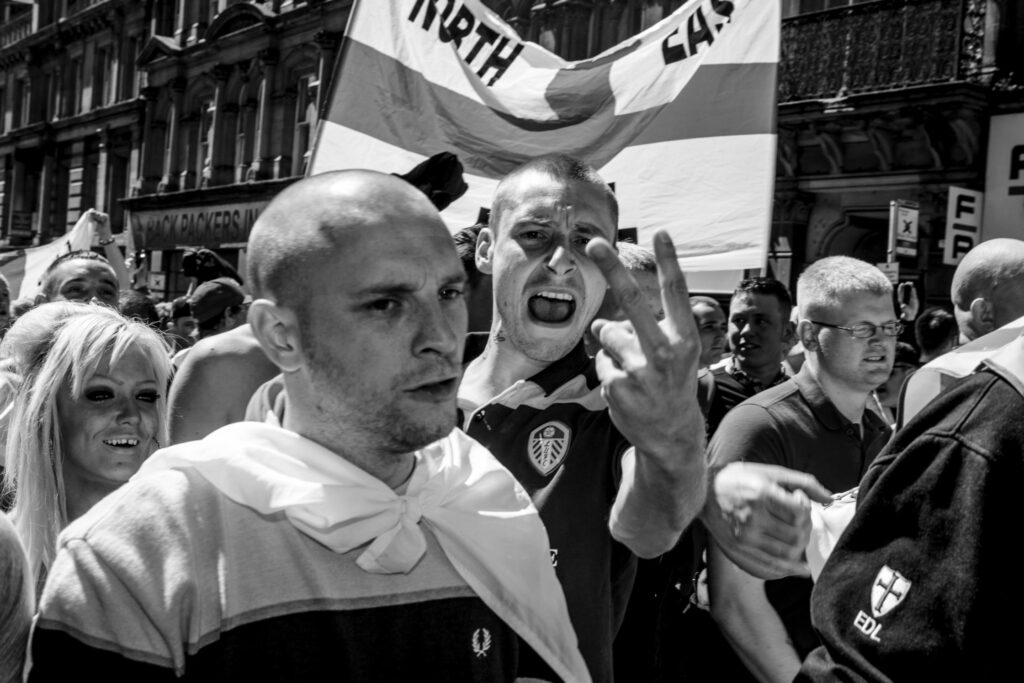
This was the first EDL march after Lee Rigby was murdered.
Vice got in touch with me to see if I would be interested in shooting it. It was in Newcastle and it had been organised before his death. People were being bussed in from other places and the Scottish Defence League.
I’d been on the chat forums and found out where they were going to be meeting so I could go down early.
Before the march I was chatting and doing some portraits and stuff. When the march kicked off, I was ushered behind police lines and the horses.
I saw other photographers had helmets and body armour and all sorts on, which I thought was a bit much. Then the bottles started coming over.
It was a horrible, horrible day. I got spat at, got bottles thrown at me, verbally abused, some guy tried to physically attack me.
It’s strange, considering they’re out chanting in public spaces, they don’t like having their photo taken, it’s weird. You think they’d be proud to be the poster person.
I’ve been covering these kind of marches, whether it be EDL, the National Front or the BNP for 10 years. If I ever do anything with the photos, I’ll call it 10 Years of Hate.
I’m passionate about capturing it and showing it for what it is.
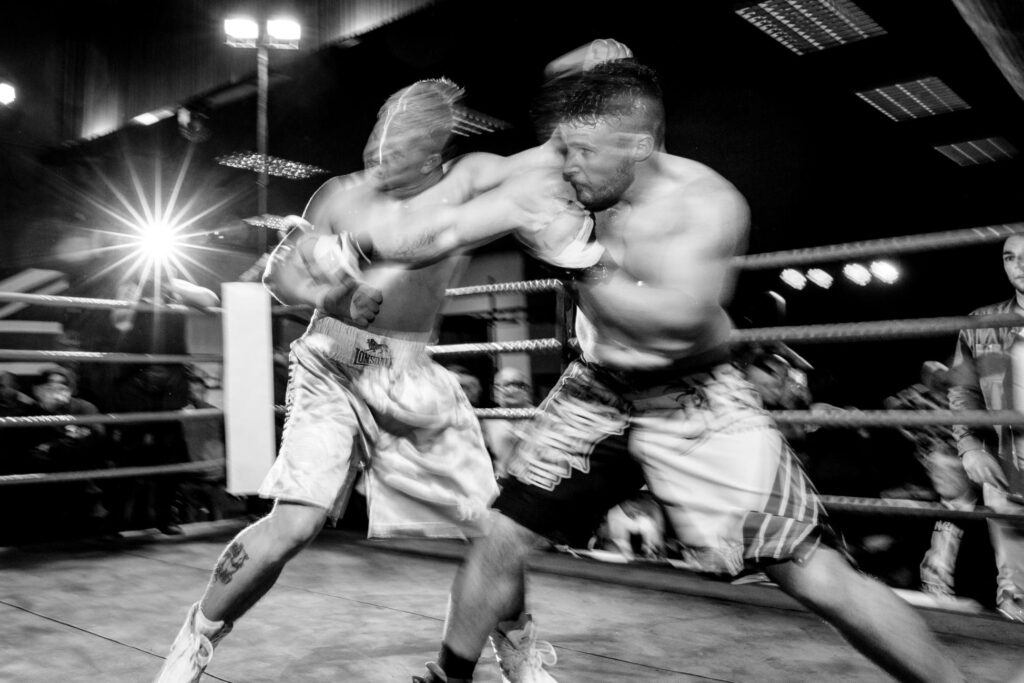
This was the very first bare knuckle fight that I shot. I’d been working with a promoter from Cullercoats, Andy McLean who was a British Commonwealth fighter.
This was the relatively early days of bare knuckle fighting and was taken in the NE6 Suite in Walker where they’d put a ring up.
I met people at that fight, including Ian Palmer – a documentary filmmaker who had spent 20 years filming the Irish fighters.
It was fascinating to see the kind of people who were willing to do this – it’s such a mixture in both unlicensed and bare knuckle fighting.
I started up doing this in the North East but photographing these fights took me all over the UK.
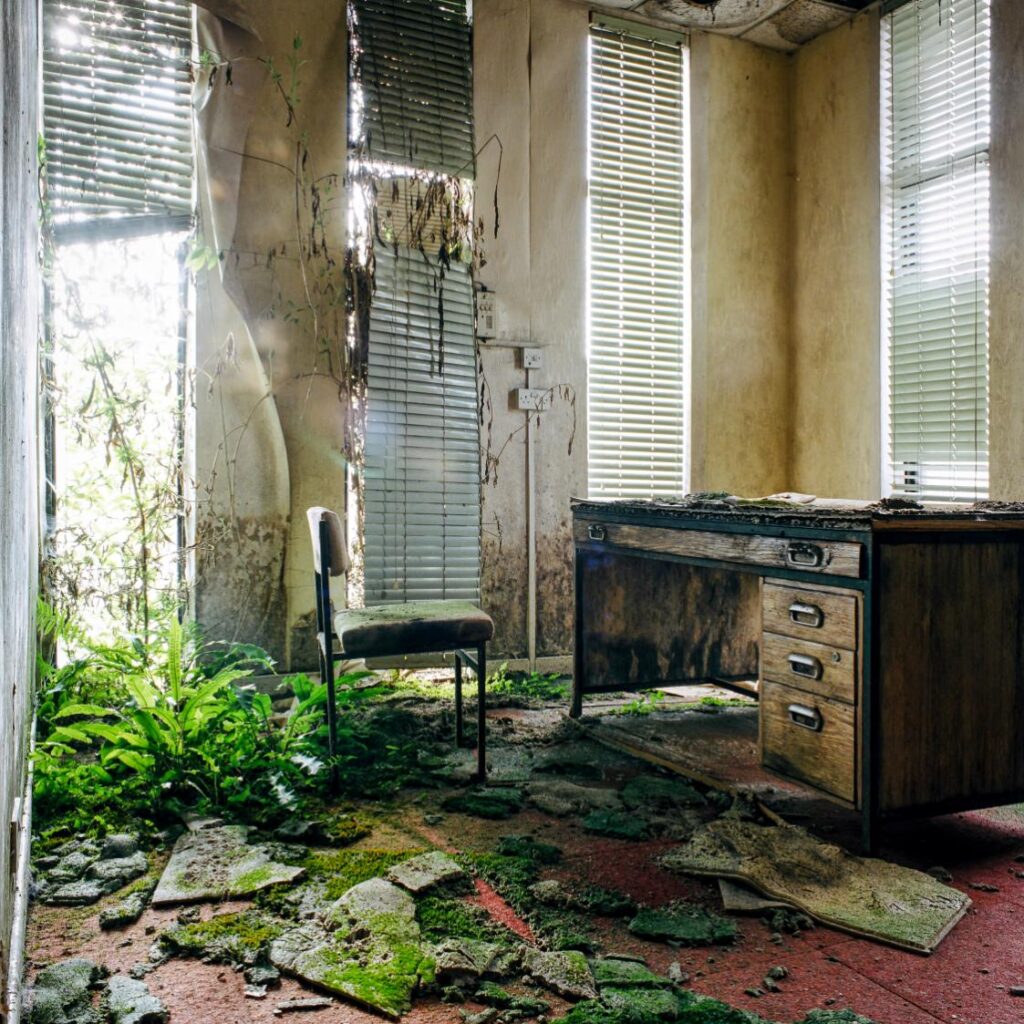
This was from my degree show, Where Ships Were Born in 2006/7.
Being a North East lad and growing up in Easington, all my family were miners and worked in the pits.
But the pits were gone by the time I became a photographer, so I was really keen to try and capture the last of the heavy industry on Wearside.
Thanks to my Dad’s friend Brian who was an electrical engineer at Pallion, I got in and was given access to all of the shipyards, including the deserted office block where this was taken.
It was like the Mary Celeste – like everyone had just got up and left and nature had taken over. There was a dining table, with all the cutlery and everything where they would wine and dine clients. It was unbelievable.
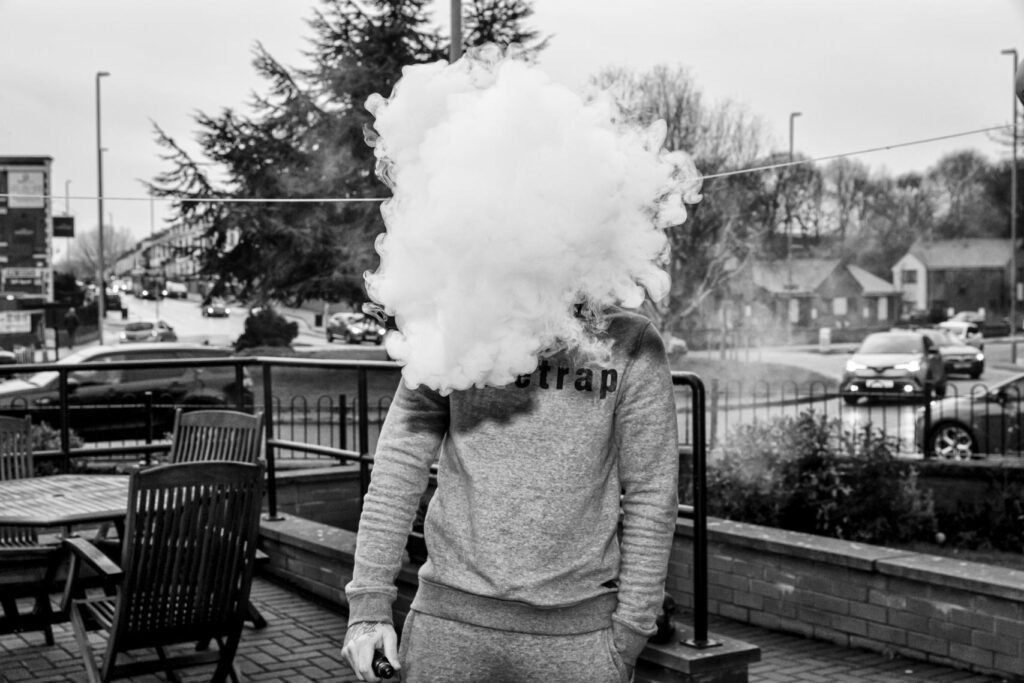
This is Michael. He was one of the companions from Emmaus (the South Shields charity which provides a home and meaningful work for homeless people).
I spent six to nine months doing workshops with companions and then was given a commission to document everything that goes on there. It culminated in a book and Amber (Films) did a short film too.
I love this photo. I love the fact it keeps his anonymity.
I want to make work about things I care about and things that p*** me off – usually the latter if I’m honest – but homelessness was something I always avoided because how do you do that with dignity?
This was my opportunity to photograph people who had experienced homelessness and help tell their stories and document the amazing work Emmaus does, which is life changing and long term.
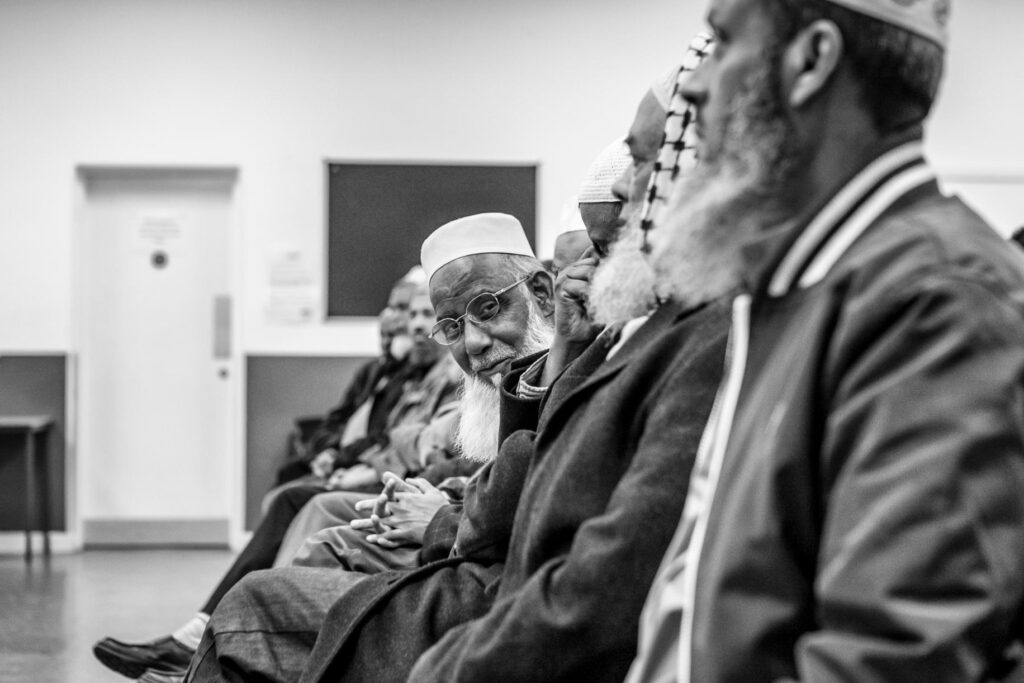
This photo was part of Homelands, an Arts Council funded commission from the Side Gallery to document a migrant community within the North East.
Initially it was supposed to be a three-month commission but I spent 18 months with the Bangladeshi community in Sunderland.
This is Raja, who was chairman of the Chester Road Mosque and businessman who opened one of Sunderland’s first takeaways – he’s giving me a cheeky little look. He liked my big beard.
I took this photo during an emergency community meeting at the Bangladeshi centre in Hendon when one of the political leaders had been kidnapped in Bangladesh.











